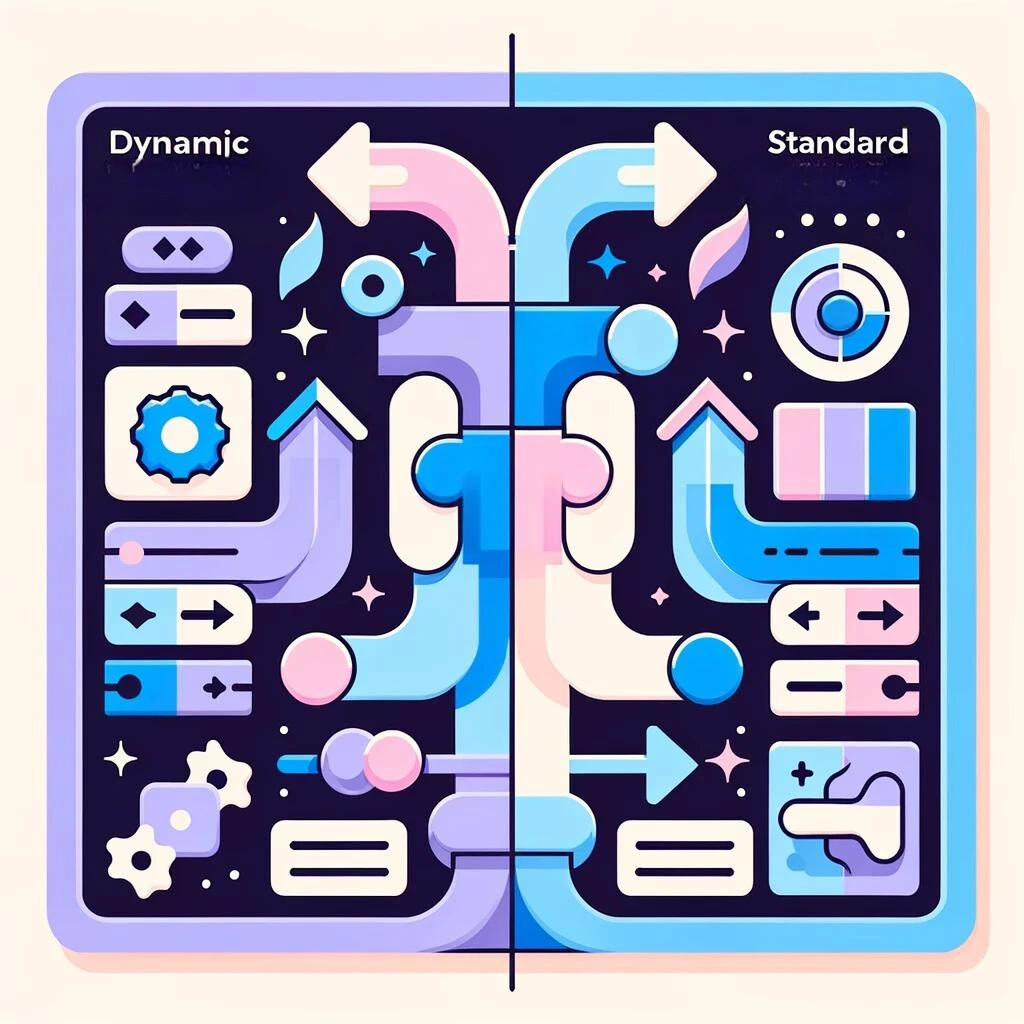

In the evolving landscape of digital advertising, the distinction between Dynamic Keyword Insertion (DKI) and standard keyword insertion emerges as a critical consideration for marketers aiming to enhance ad relevance, customization, and ultimately, campaign performance. Understanding the nuances of each technique can significantly impact your approach to Pay-Per-Click (PPC) strategies and ad personalization, leading to more engaging and effective ad campaigns.
In conclusion, the choice between DKI and standard keyword insertion hinges on your advertising goals, the level of customization you wish to achieve, and how dynamically you want your ads to resonate with potential customers. Embracing DKI can lead to superior ad customization, improved ad relevance, and ultimately, a more successful advertising campaign.
In the realm of digital advertising, the methodologies employed to engage and convert audiences are continually evolving. Among these, Dynamic Keyword Insertion (DKI) and standard keyword insertion stand out as pivotal techniques for ad customization and relevance. This chapter delves into the essence of both strategies, highlighting their functionalities, benefits, and how they play a crucial role in dynamic content optimization and PPC strategy enhancement.
Dynamic Keyword Insertion is an advanced feature used in digital advertising that allows ads to automatically insert keywords relevant to a user's search query. This real-time ad adaptation ensures that the ad content is tailored to meet the specific needs and intentions of the user, enhancing ad relevance and personalization.
Key Functionalities:
Contrastingly, standard keyword insertion is a more straightforward approach where predefined keywords are manually inserted into the ad copy. While it lacks the real-time adaptation of DKI, it still plays a vital role in targeted advertising mechanisms.
Key Mechanisms:
Both DKI and standard keyword insertion are integral to dynamic content optimization. They facilitate a tailored advertising experience, where DKI offers a more automated, real-time solution, and standard insertion provides a solid foundation for targeted campaigns.
Understanding the distinction and application of DKI and standard keyword insertion is crucial for advertisers seeking to enhance their PPC strategies and achieve superior ad personalization. By integrating these techniques, advertisers can significantly improve the relevance and impact of their ads, driving better engagement and conversions.

In the digital marketing arena, the strategic deployment of keywords within ad copy plays a pivotal role in connecting with the target audience effectively. This chapter offers a detailed comparative analysis between Dynamic Keyword Insertion (DKI) and standard keyword insertion, with a special focus on ad customization techniques, automated keyword replacement, ad copy variability, and the integral role of semantic precision in enhancing ad relevance and engagement.
Through this comparative analysis, it's evident that DKI offers significant advantages over standard keyword insertion in terms of ad customization, relevance, and user engagement. By leveraging automated keyword replacement and semantic precision, DKI provides a dynamic and responsive advertising solution that meets the evolving needs of digital audiences.

In the digital marketing realm, the quest for the most effective ad customization technique has led to a pivotal comparison between Dynamic Keyword Insertion (DKI) and standard keyword insertion. This chapter explores the multifaceted advantages of DKI over its standard counterpart, emphasizing enhanced ad relevance, personalization, and the transformative capability of real-time ad adaptation. By integrating case studies, we'll demonstrate the profound impact of DKI on PPC strategy enhancement, highlighting its superiority in driving campaign success.
To illustrate DKI's effectiveness, we delve into case studies from diverse industries. Each case showcases how businesses leveraged DKI to achieve:
The advantages of Dynamic Keyword Insertion over standard keyword insertion are clear and compelling. From enhancing ad relevance and personalization to enabling real-time ad adaptation, DKI stands as a cornerstone of modern PPC strategy, driving unparalleled campaign performance and user engagement.
The integration of Dynamic Keyword Insertion (DKI) into your digital advertising strategy heralds a significant leap towards achieving unparalleled ad customization and relevance. This chapter unravels effective strategies for deploying contextual advertising strategies and behavioral targeting through DKI, alongside best practices for leveraging AI-driven keyword insertion to ensure semantic alignment with user intent. By embracing these methodologies, advertisers can significantly enhance their PPC campaigns, driving more meaningful engagement and conversions.
By strategically implementing DKI, advertisers can significantly enhance the relevance, personalization, and overall impact of their digital ads. The key lies in understanding and leveraging the unique capabilities of DKI, from contextual advertising strategies to semantic precision and behavioral targeting. This approach not only elevates ad performance but also fosters a deeper connection with the target audience.

While Dynamic Keyword Insertion (DKI) stands as a transformative tool in the arsenal of digital advertising, its implementation is not without challenges. This chapter explores potential hurdles associated with adopting DKI and delves into the ethical and practical considerations of automated keyword replacement and personalization. By addressing these aspects, advertisers can harness the full potential of DKI, ensuring a balance between effectiveness and integrity in their advertising efforts.
Adopting DKI requires careful consideration of its complexities and potential challenges. However, by embracing best practices and maintaining an ethical stance, advertisers can leverage DKI to significantly enhance ad customization, relevance, and engagement. The journey toward effective DKI utilization is one of continuous learning and adaptation, offering profound opportunities for innovation in digital advertising.

As we navigate through the intricacies of digital marketing, the distinction between Dynamic Keyword Insertion (DKI) and standard keyword insertion emerges as a cornerstone for advancing ad customization and engagement. This concluding chapter encapsulates the critical differences between these two strategies and projects into the future of advertising customization, emphasizing the pivotal role of NLP and AI advancements.
Looking ahead, the future of advertising customization is bright, with NLP and AI technologies at the helm driving innovation. These advancements promise to further refine DKI, making it even more intelligent and responsive to the nuances of user intent and search context. As we step into this future, advertisers who embrace these technologies will find themselves well-equipped to deliver ads that are not just seen but truly resonate with their intended audience.
The journey from standard keyword insertion to DKI symbolizes the broader evolution of digital advertising towards more personalized, efficient, and engaging campaigns. By leveraging the capabilities of DKI, advertisers can ensure their messages reach the right people, with the right content, at the right time.
Interested in pioneering the future of ad customization? Embrace the advancements in DKI and AI to revolutionize your advertising strategy.
DKI can potentially lower advertising costs by improving ad relevance and Quality Scores, leading to lower cost-per-click (CPC) rates. Its ability to dynamically match user queries with relevant ad copy makes ads more effective, potentially increasing click-through rates (CTRs) and conversions. This efficiency contrasts with standard keyword insertion, where less targeted ad placements might result in higher costs due to lower relevance and Quality Scores.
While DKI offers flexibility and can be implemented across various digital advertising platforms, its effectiveness and availability may vary. It is most commonly associated with Pay-Per-Click (PPC) advertising on search engines like Google Ads. For platforms that support DKI, it's crucial to understand the specific guidelines and best practices to maximize its benefits.
Common pitfalls include improper keyword matching leading to nonsensical ad copy, overreliance on DKI without quality control, and neglecting user privacy. Advertisers can avoid these by regularly reviewing and testing ad copy for coherence, maintaining a balance between automation and manual oversight, and adhering to privacy laws and guidelines.
Semantic precision in DKI goes beyond mere keyword matching to understand the context and intent behind search queries. By leveraging AI and NLP technologies, DKI can tailor ads that align more closely with user needs and interests, resulting in higher engagement levels. This approach ensures ads are not just relevant but also meaningful to the audience, thereby enhancing overall campaign performance.
Future advancements in NLP and AI are expected to enhance DKI by improving the understanding of complex user queries, emotional intent, and contextual nuances. This could lead to even more sophisticated ad customization, allowing for hyper-personalized ad experiences that resonate on a deeper level with individual users. Additionally, advancements could streamline DKI management, making it more accessible and effective for advertisers across different sectors.
